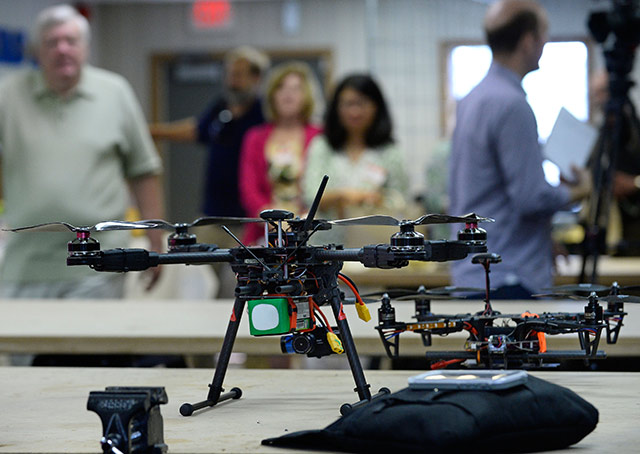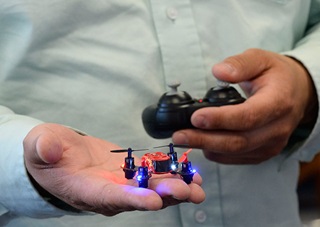
Representatives of drone associations, research institutes, and universities; drone enthusiasts; and those curious about the growing drone industry gathered June 14 at the UAS Academy near Warrenton, Virginia, for RoboFest 2015. The meeting of the minds, sponsored by the Academy of Model Aeronautics, discussed potential unmanned aircraft uses and questions surrounding FAA regulations, training and safety, privacy, and other issues.
“Twenty years from now, what’s our business look like?” event organizer Darryl Jenkins asked attendees, encouraging them to work together to shape the industry’s future. “We’re all learning. We’re starting from zero.”
Drone users currently have two ways to legally operate unmanned aircraft—either as a recreational hobbyist who follows the same rules as those in place for model aircraft or as a commercial operator who has received a 333 exemption. As of June 12, the FAA had granted 556 exemptions for commercial operators, including amendments to previous exemption requests, and about 1,000 more were pending, according to Mark McKinnon, a partner with the law firm McKenna Long & Aldridge LLP who specializes in drone issues.
The FAA is currently sending letters to those who cross the line into commercial operations without having a 333 exemption or to those who break the recreational guidelines in place for model aircraft, educating them on the issue and asking them to stop operations, said Mark Dombroff, also a partner at McKenna Long & Aldridge LLP. However, Dombroff said that the FAA will seek action against repeat offenders. He also warned pilots that the FAA could move against their pilot certificate if they illegally operate a drone.
 Meanwhile, the FAA’s notice of proposed rulemaking to regulate small drones weighing less than 55 pounds received about 4,500 comments, including comments from AOPA, but a final rule likely won’t be advanced for 18 to 24 months, said Dombroff. “The regulatory framework is pretty much at the beginning point,” he said, adding that any regulations that would address sense-and-avoid and beyond-line-of-sight operations are still five to 10 years away. Jenkins, on the other hand, speculated that the technology for sense-and-avoid operations could be ready within a year.
Meanwhile, the FAA’s notice of proposed rulemaking to regulate small drones weighing less than 55 pounds received about 4,500 comments, including comments from AOPA, but a final rule likely won’t be advanced for 18 to 24 months, said Dombroff. “The regulatory framework is pretty much at the beginning point,” he said, adding that any regulations that would address sense-and-avoid and beyond-line-of-sight operations are still five to 10 years away. Jenkins, on the other hand, speculated that the technology for sense-and-avoid operations could be ready within a year.
William Norwood, vice president of product sales and technology at JDA Aviation Technology Solutions, an FAA-recognized qualified certification consultant company, explained the need for uniform standards for drones: “There’s very limited standards on how UAVs ought to be operated in the airspace today…and certainly no standards on how to be operated in the airspace system tomorrow.”
Acknowledging the gap between user demand for drone operations and the lack of regulatory framework to work within, Jenkins said that the industry and users who have a vested interest should work with the FAA to develop rules. “Those of us who have a stake in this—who want to see this happen—we have to step up,” Jenkins said. “We have to make sure it happens.”



